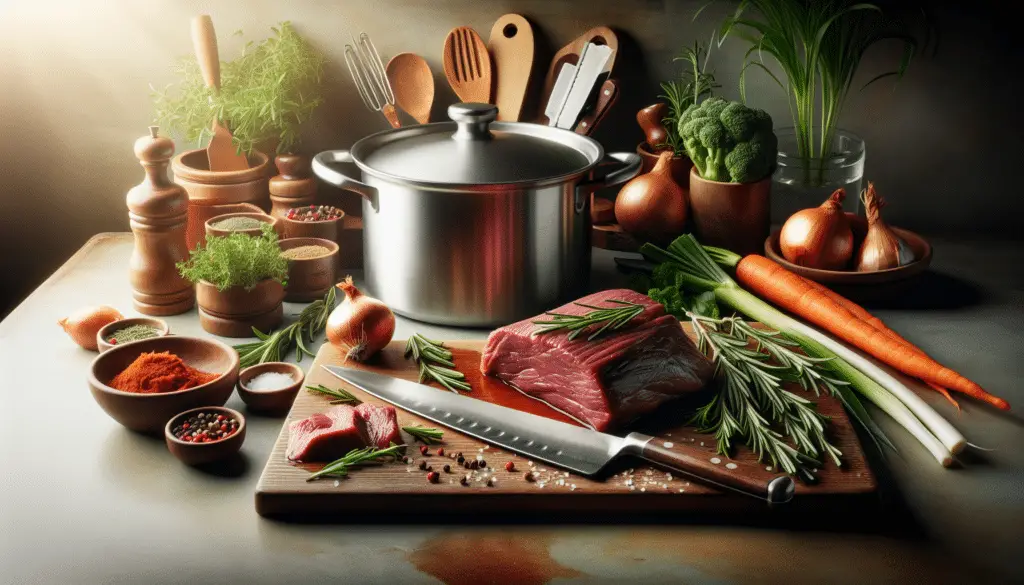Understanding Venison: An Introduction to Cooking Deer Meat
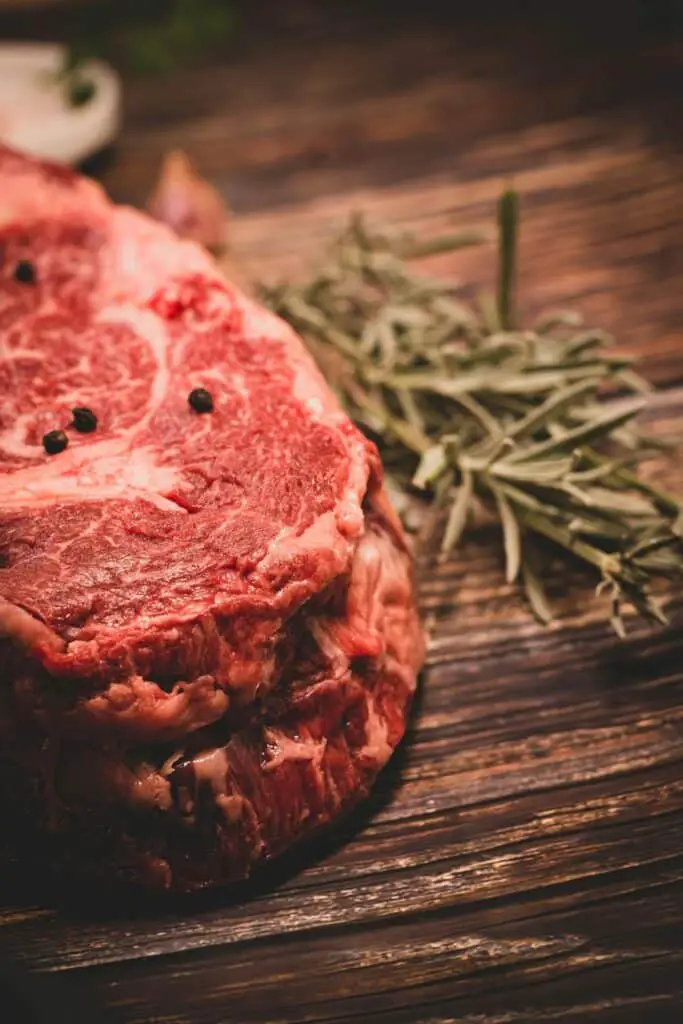
Venison is the name given to the meat of deer, and it’s a highly regarded game meat that offers a rich and distinctive flavor compared to traditional meats like beef or chicken. If you’re seeking to cook venison, it’s crucial to understand the unique characteristics of this meat.
The Basics of Selecting Quality Venison
Before cooking, selecting the right cut and quality of venison is essential. Whether you’ve harvested the deer yourself or acquired the meat, choose cuts that are deep red with a good amount of marbling. This indicates a tender cut that’s more likely to retain moisture and flavor.
Prepping the Meat
Proper preparation is necessary to enhance the natural flavors of venison. As deer are typically leaner than farm-raised animals, removing all traces of silver skin and fat is recommended. These can contribute to the distinct, often described “gamey,” flavor, which some people find unpleasant.
Making Venison Palatable: Addressing Gamey Flavor
To reduce the gamey taste in venison, try soaking the meat in a solution of water, vinegar, and salt before cooking. Some prefer to use buttermilk or a marinade including acidic components like lemon juice or wine to tenderize and neutralize strong flavors.
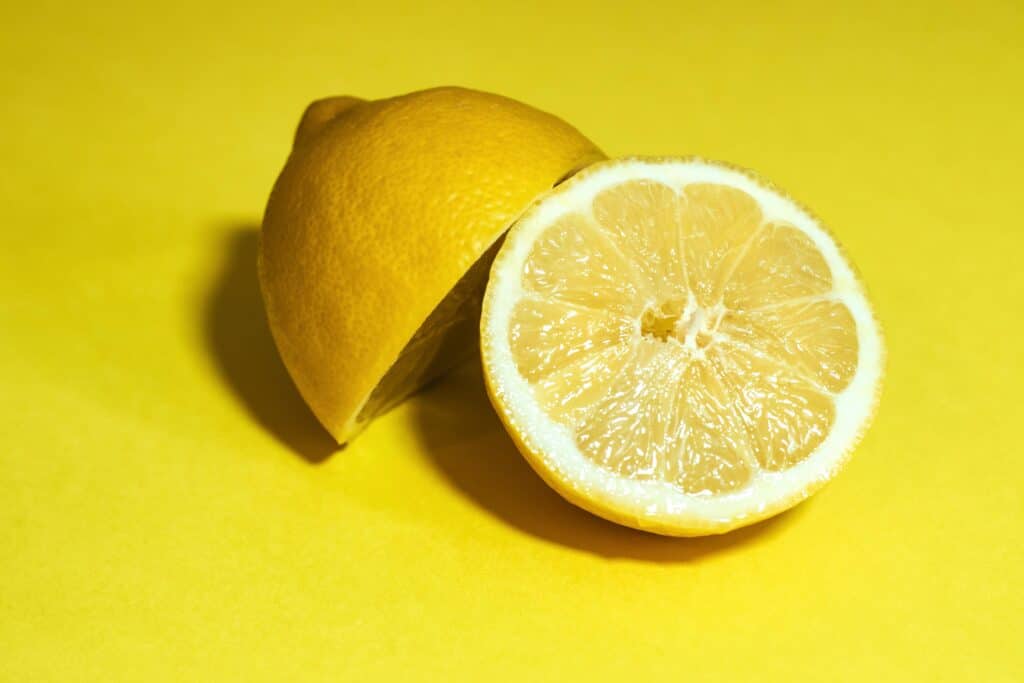
Marinating Venison: Enhancing Tenderness and Flavor
Marinating venison not only lessens the gamey taste but also adds moisture and helps in tenderizing the meat. Ingredients in a good marinade for venison often include vinegar or lemon juice, oil, herbs, and spices. A zip-top bag can be an excellent tool for effective marinating, ensuring the meat is evenly coated and can be rotated easily.
Choosing the Right Cooking Method
Selecting the proper cooking method can make a significant difference in the outcome of your venison dish. For tender cuts like the loin or backstrap, quick cooking methods like grilling or pan-searing are ideal. On the other hand, tougher cuts benefit from slow cooking techniques such as braising or stewing.
Grilling Venison for a Smoky Flavor
Grilling is a perennial favorite for cooking venison, adding a smoky dimension to its flavor. Always preheat your grill, and use high, direct heat for cuts like steaks. A quality grill, such as the Weber Genesis II E-315, comes highly recommended for its even heat distribution and superior temperature control.
Find This and More on Amazon
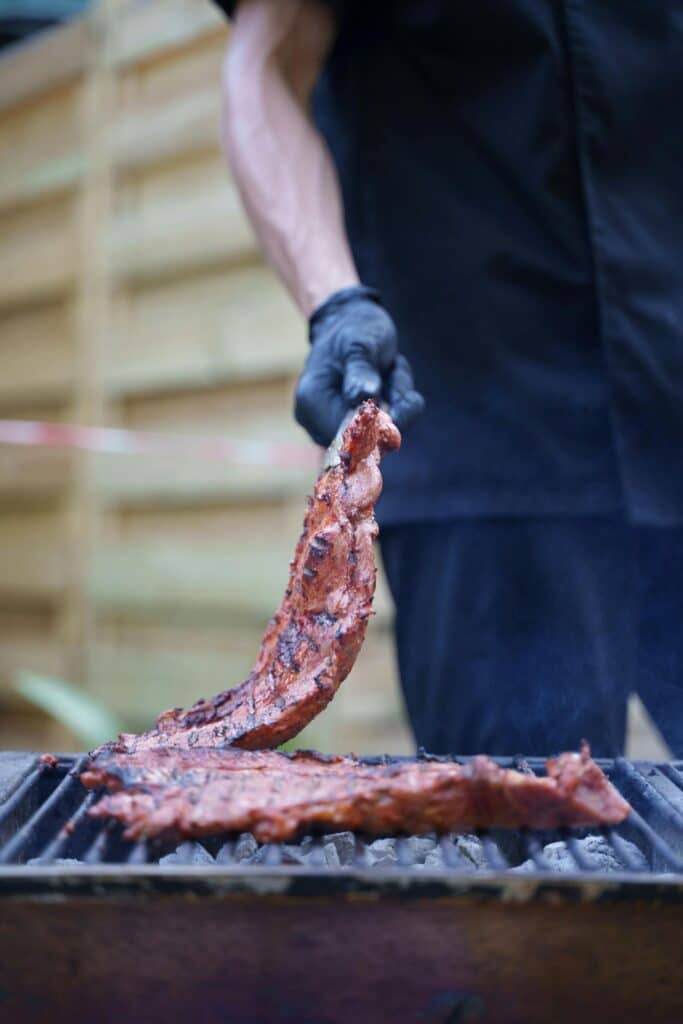
Pan-Searing for a Crisp Exterior
Pan-searing venison steaks on a stovetop can result in a beautifully caramelized exterior while maintaining a juicy interior. A quality pan such as the All-Clad D3 Stainless Fry Pan is considered a valuable addition for uniform cooking and achieving a perfect sear.
Slow Cooking to Perfection
Tougher cuts of venison are an excellent choice for slow cooking, which allows the meat’s fibers to break down, resulting in a tender and flavorful dish. A slow cooker, like the Crock-Pot 7-Quart Programmable Slow Cooker, can be a convenient option for preparing venison dishes with minimal supervision.
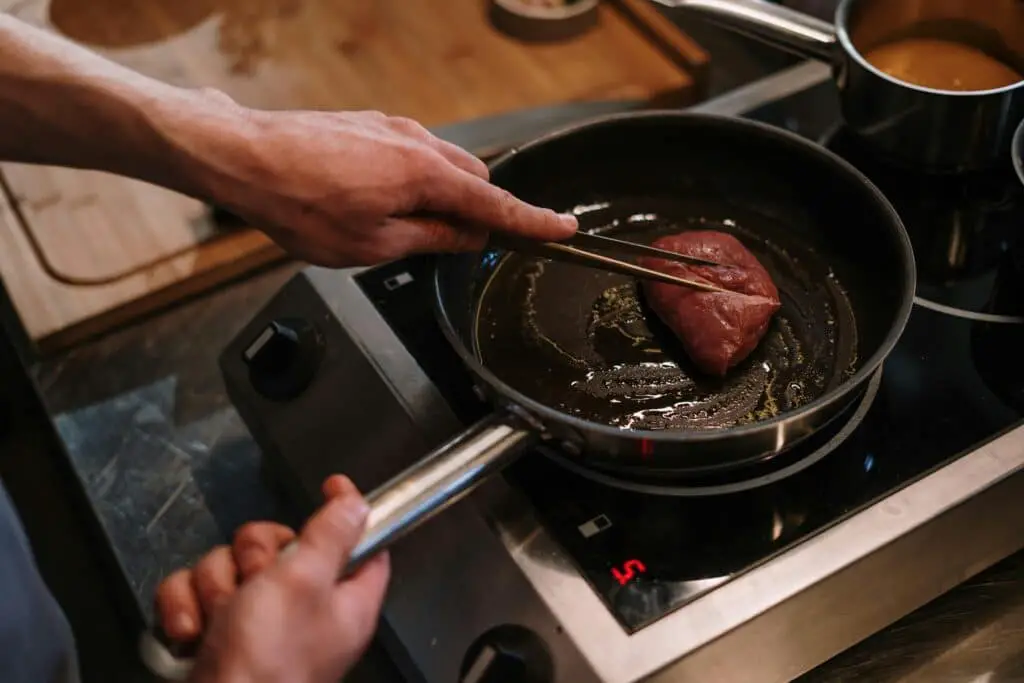
Perfecting Internal Temperature
Ensuring that venison is cooked to the correct internal temperature is vital. For medium-rare, aim for an internal temperature of 130°F to 135°F. It’s helpful to use a reliable meat thermometer such as the ThermoPro TP20 Wireless Remote Digital Cooking Meat Thermometer for accurate readings.
Find This and More on Amazon
Resting the Meat
After cooking, resting venison is a crucial step that shouldn’t be overlooked. Allowing the meat to rest for a few minutes before slicing ensures that the juices redistribute, providing a moist and flavorful meal.
FAQ: Venison Preparation and Cooking Tips
How can I make venison less gamey?
Soaking venison in a blend of water, salt, and vinegar or using a buttermilk marinade can help decrease the gamey flavor.
What’s the best way to tenderize venison?
Marinating venison in acidic liquids such as wine, vinegar, or lemon juice helps break down the meat’s fibers, resulting in a more tender cut.
Is it necessary to remove all the fat from venison?
Yes, trimming away fat and silver skin helps to reduce any unwanted flavors and improves the texture of your dish.
Can I use my regular beef recipes for venison?
While venison can often be cooked using beef recipes, adjustments may be needed due to its lower fat content and distinct flavor.
What internal temperature should venison reach?
For a medium-rare finish, cook venison until it reaches an internal temperature of 130°F to 135°F.
Where can I learn more advanced venison recipes?
Specialized cookbooks and cooking classes are great resources for broadening your venison repertoire.
How long should I marinate venison?
Marinating time can vary from 30 minutes to overnight, depending on the recipe and cut of meat.
Is it safe to eat venison medium rare?
Yes, when properly handled and cooked, venison is safe to eat at a medium-rare temperature of 130°F to 135°F.
Can I replace venison with beef in stews?
Yes, venison can be a delicious substitute for beef in stews and other slow-cooked dishes.
How can I ensure my roast venison stays moist?
Using a meat thermometer to avoid overcooking and letting the meat rest before carving will help retain moisture.
Pairing Venison with the Right Sides and Wine
Pairing venison with the appropriate sides and wine can elevate the dining experience. Earthy sides like roasted root vegetables or a hearty grain pilaf complement the robust flavor of venison, while a medium-bodied red wine such as Pinot Noir balances its richness.
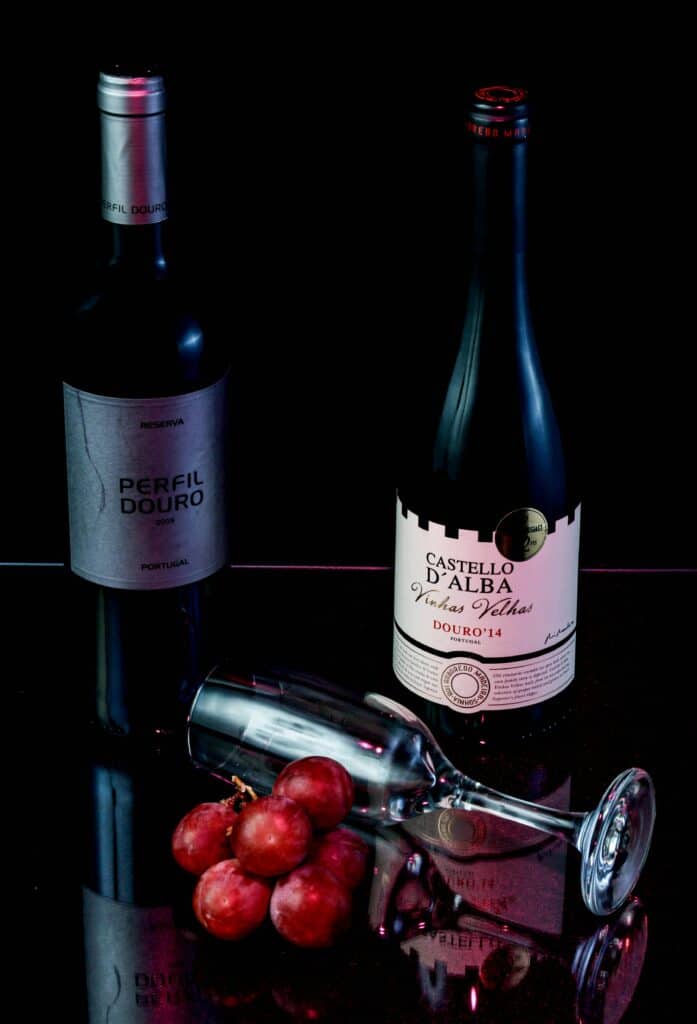
Understanding Venison Cuts and Cooking Styles
When diving into the world of cooking venison, recognizing the various cuts is paramount. Similar to beef, venison offers a range of cuts such as steaks, roasts, and ground meat.
The backstrap, or loin, is one of the most coveted cuts due to its tenderness and flavor. For novices, experimenting with this cut can be rewarding as its quality is hard to diminish even with minimal cooking experience.
Ribs, shoulders, and other cuts with more connective tissue are tougher but become deliciously succulent with slow-cooking methods. It’s much like understanding a doe’s behavior – patience and the right approach will yield the best results.
Enhancing Venison’s Flavors
Like a deer in its habitat, venison’s flavor is best when its natural qualities are highlighted and respected. Utilizing fresh herbs and robust seasonings can enhance its taste without overpowering it.
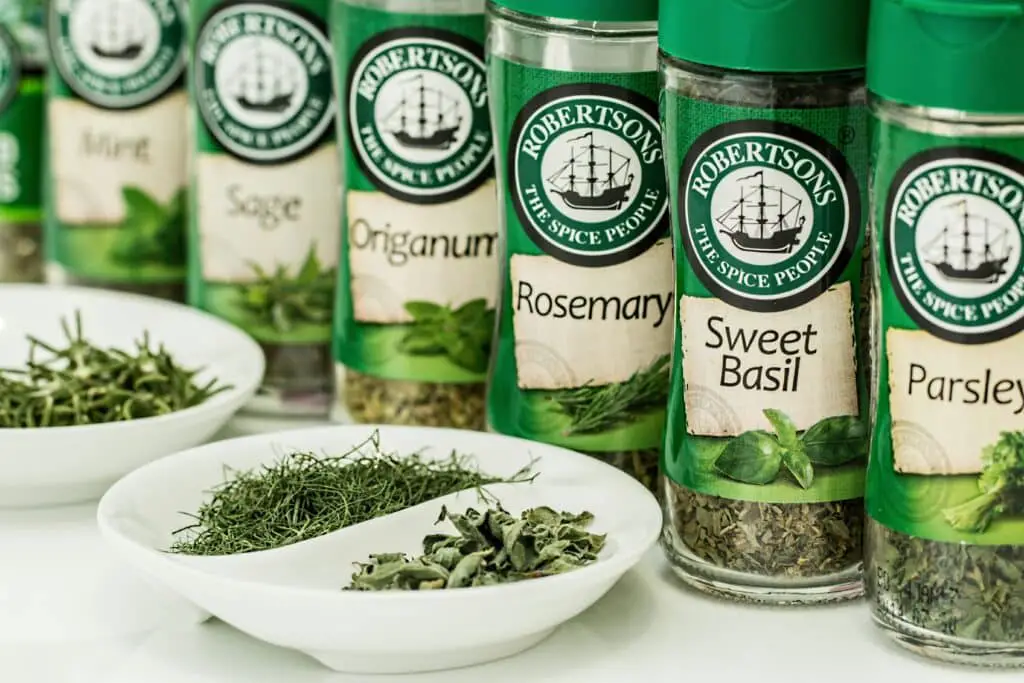
Rosemary, thyme, and juniper berries are classic aromatic companions that pair well with the strong flavor of deer meat. This connection between the game’s diet, such as hydrangeas and its taste, is worth noting.
Venison and Food Safety
Safety is as crucial in cooking as it is during a deer or elk hunt. Always ensure your venison is safely processed and stored. Frozen venison should be defrosted in a refrigerator to prevent the growth of harmful bacteria.
For those who procure their meat through hunting, understanding how to field dress a deer and proper butchering techniques can have a significant impact on the quality of the meat.
Roasting Venison for Special Occasions
Roasting is a traditional approach perfect for serving venison during special gatherings. The key to a perfect roast lies in the oven’s temperature control and the use of a meat thermometer like the ThermoPro TP20, as well as letting the meat rest adequately before carving.
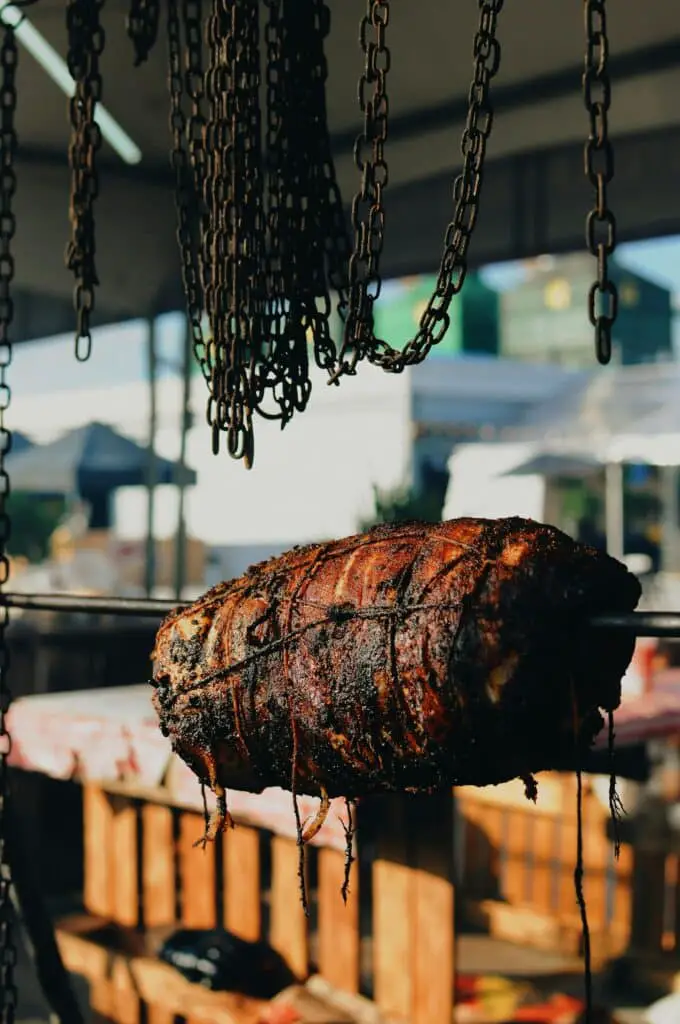
The ThermoPro TP20 is lauded for its dual probes that allow for monitoring the roast without opening the oven door. Reviews rave about not only the accuracy but also the ease of use in various cooking situations.
Find This and More on Amazon
Conscious Cooking: Respect for the Animal
Respect for the game is at the heart of venison cuisine. It’s about honoring the animal much like understanding deer vs reindeer; it’s about appreciation for the distinctiveness each brings to the table.
When preparing venison, consider using as much of the animal as possible. This includes making stocks and broths from bones and utilizing tougher cuts for dishes that demand long cooking times, much like a study of deer biology uses every piece of data.
Seasonal Cooking with Venison
Aligning venison dishes with the seasons can bring out the best in this versatile meat. A summer venison burger barbecue can become as festive as observing deer velvet shedding – a sign of nature’s cycles.
In colder months, hearty stews and chili made with ground venison can warm the soul. These dishes allow the use of seasonal produce, blending flavors that complement the meat’s richness.
Perfect Venison Pairings
Just as you’d pair the right brow-tine with the correct scoring method, matching venison with complementary elements on the plate is an art. For example, bold spices like chili and cumin stand up well to venison’s strong flavor profile.
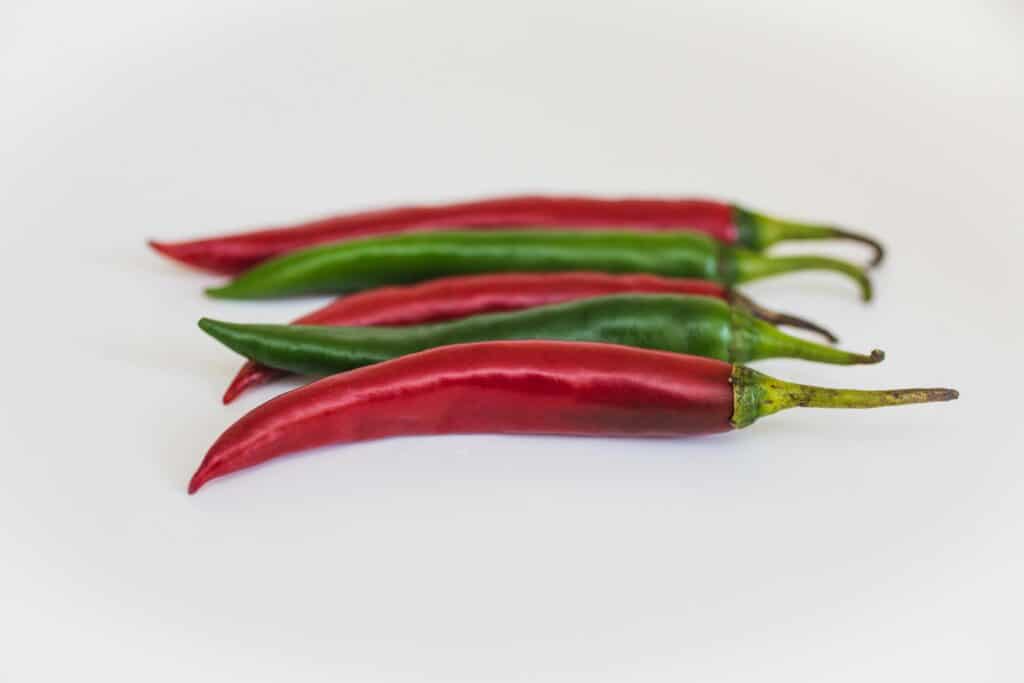
On the sweeter side, a fruit-based sauce such as a cherry or blueberry reduction can provide a delightful contrast. These combinations can turn a good venison meal into a great one.
Recipes to Get You Started
There are numerous venison recipes out there, ranging from beginner-friendly to gourmet. Starting with a basic recipe like venison meatloaf or burgers can provide a foundation to build upon.
For those looking to venture into more complex dishes, one might try venison Wellington or a venison ragu – both showcase the meat’s potential when paired with the right flavors and techniques.
Learning from Experts: Classes and Books
If you’re looking for a deeper dive into venison preparation, consider enrolling in a cooking class or purchasing cookbooks specifically tailored to game meat.
Experts like Hank Shaw, author of “Buck, Buck, Moose: Recipes and Techniques for Cooking Deer, Elk, Antelope, Moose, and Other Antlered Things,” provide a treasure trove of knowledge for the aspiring venison chef.
Shared Experiences: Connecting Through Cooking
Cooking venison is more than just a meal; it’s about the story and experience behind the hunt or acquisition. Its connection to nature and our primal past is much like the way a deer forages, instinctive and profound.
When you cook and serve venison, you’re not just providing sustenance; you’re offering a piece of tradition and nature that can bridge gaps, much like the caution a deer might have before it trustfully approaches.
Embracing Sustainability and Ethical Hunting
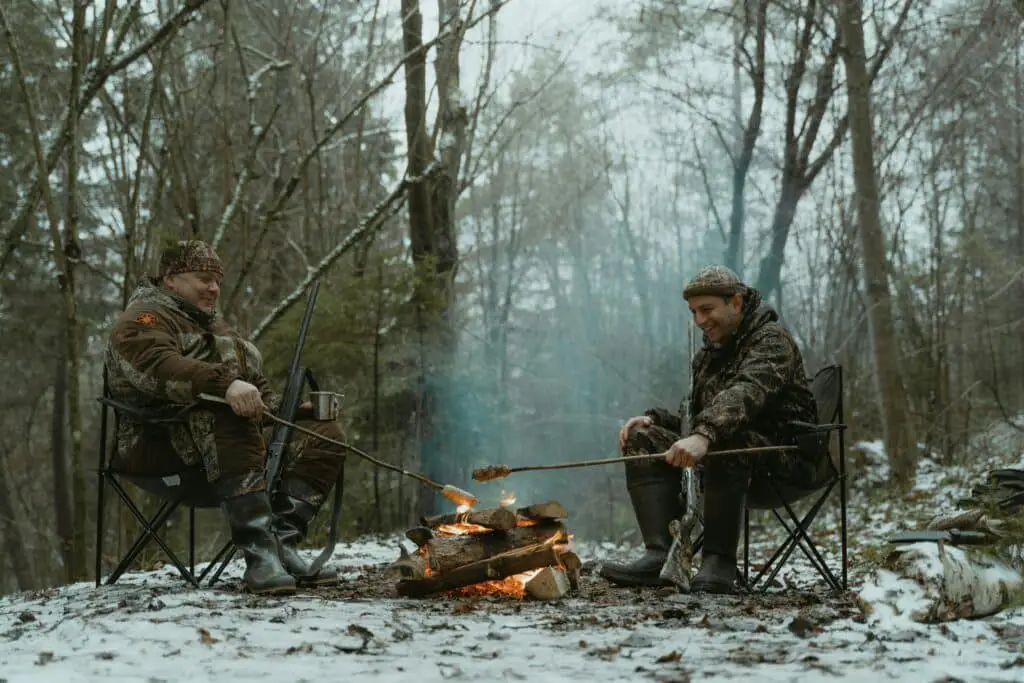
For those who hunt, cooking venison plays a role in the cycle of ethical hunting and sustainability. This mirrors the conservation efforts made to protect species like the Indian Hog deer, ensuring they continue to thrive in their natural habitat.
Responsible hunters who source their meat from the wild often subscribe to a field-to-fork philosophy, taking pride in harvesting and preparing their own meals in the most sustainable way possible.

